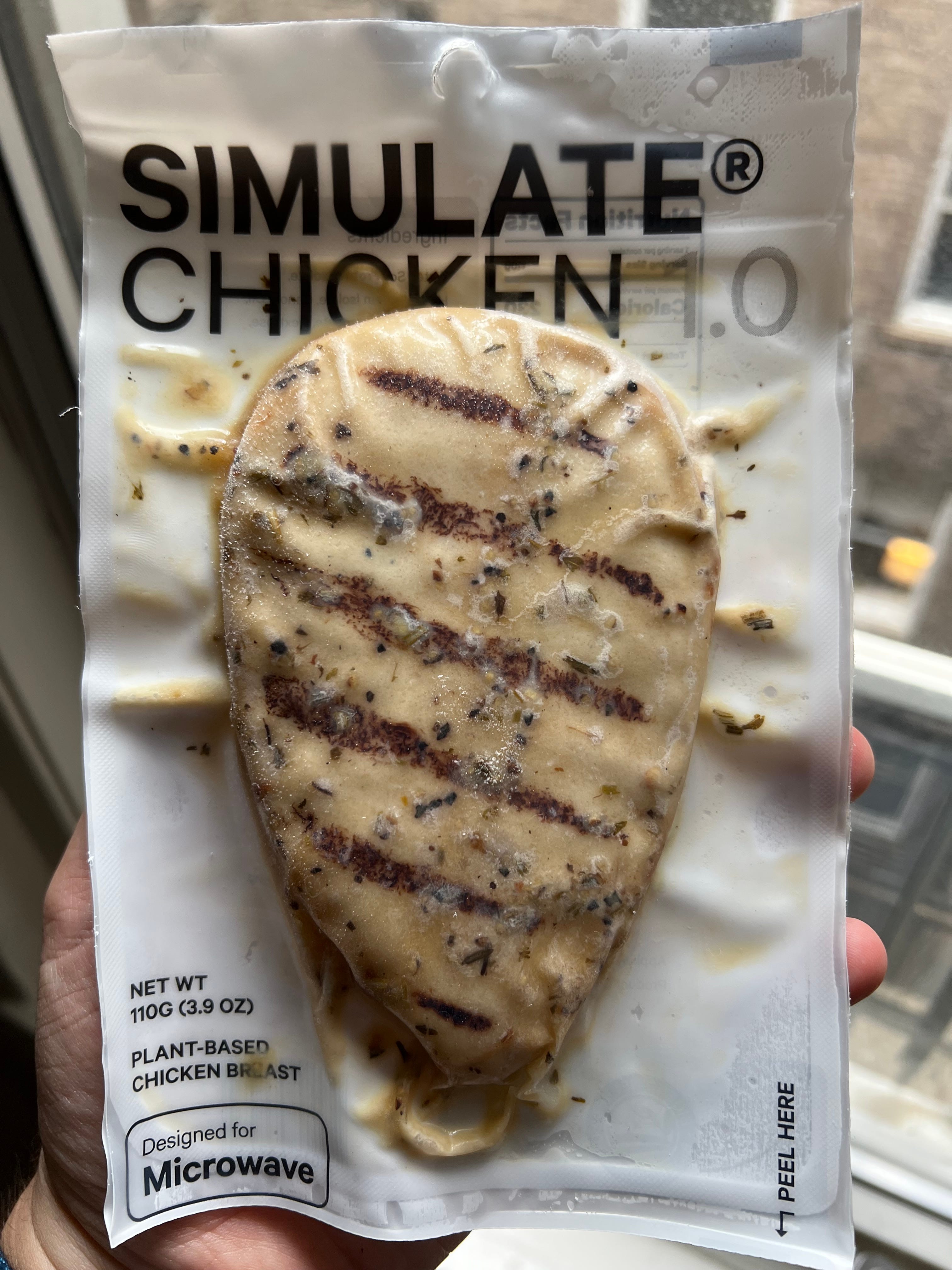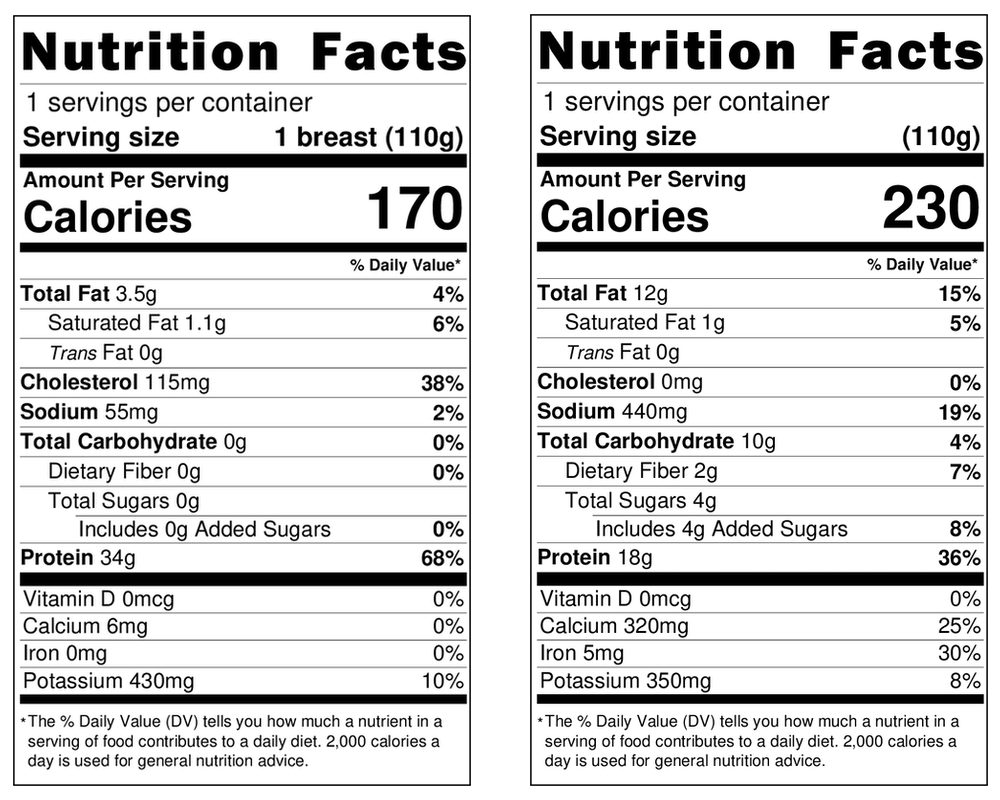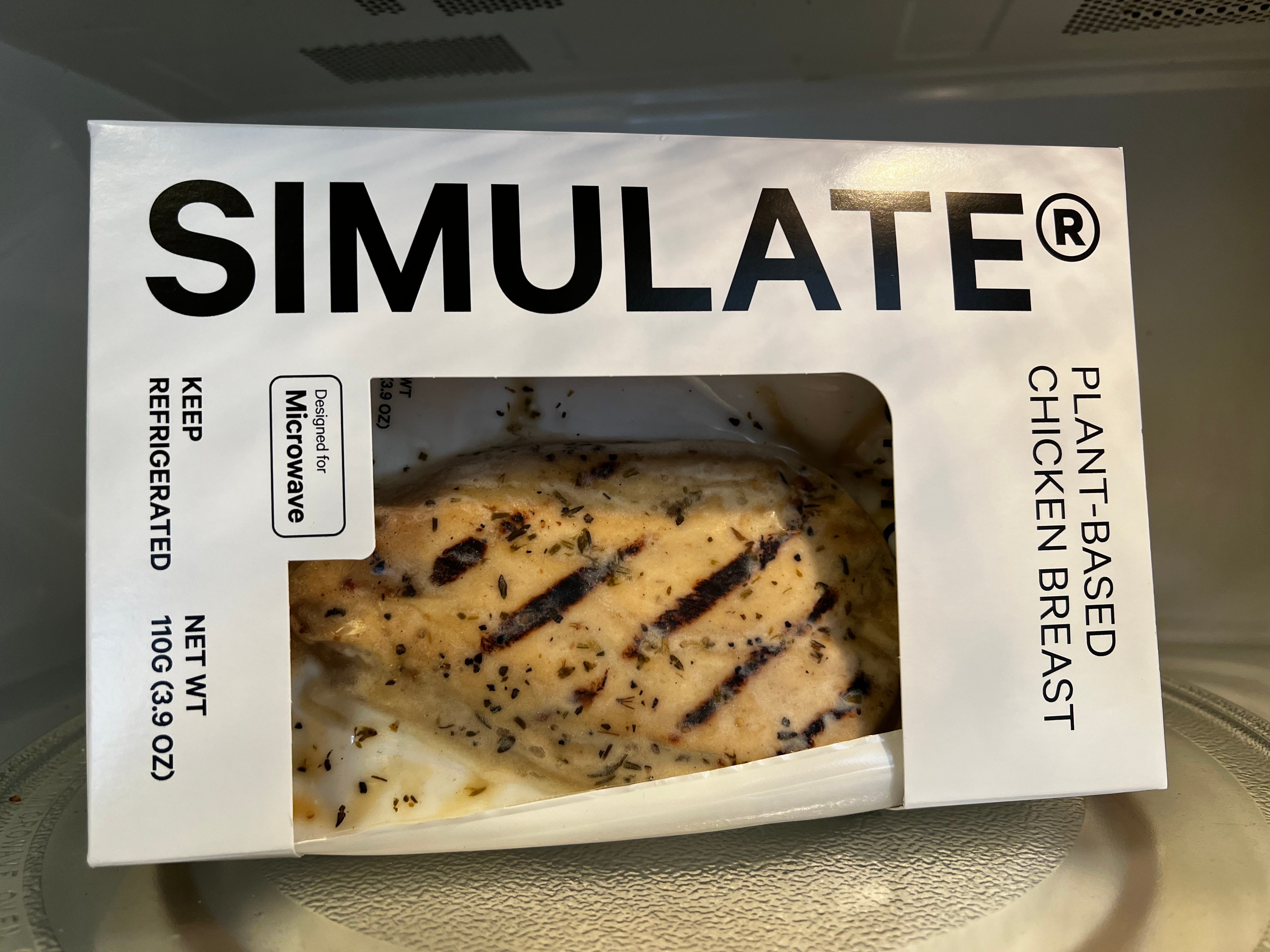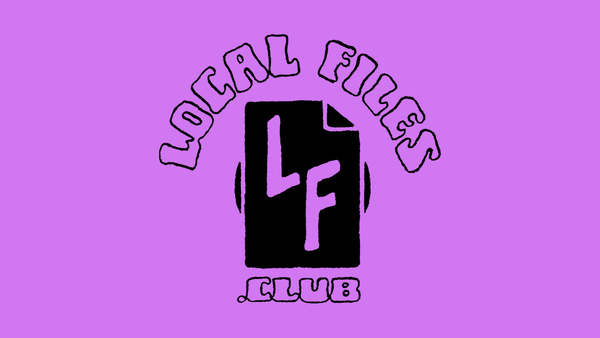Simulate Chicken is a bland vision of a post-meat future
The future is tasteless

Nuggs were always fun. The branding of these plant-based nuggets was tongue-in-cheek, both mocking and embracing the start-up culture from whence the fake chicken was born. Their Instagram page was a wall of memes. Updates to the recipe were “releases”—they’re on Nuggs 2.1 at the moment. They’re unapologetically lab-created and highly processed. Regardless of whether you liked Nuggs, they were at least more fun than other plant-based meats out there.
The latest product from Simulate, the company behind Nuggs, commits a surprising cardinal sin: it’s boring. The team deleted all of the memes and released a bland piece of faux chicken breast that you cook in the microwave. The tongue-in-cheek jokes are gone, leaving behind an actual start-up-pilled belief in optimizing for speed and convenience above all else. You can cook this bad boy in just under two minutes flat—and the taste reflects that.
“Maybe the name is still fun?”, you ask with some hope. Folks, they called it Simulate Chicken.

Chicken isn’t Simulate’s first foray into non-Nuggs products. After expanding the Nuggs lines with Spicy and Dino modifiers, they turned to Tenders, a.k.a. Long Nuggs. They also tried a patty—they called it a Disc—using the Nuggs recipe that has since been discontinued. Also discontinued—or, more accurately, never officially launched—was their first attempt at a totally new texture and recipe, Wings, which I declared “not ready for take-off” last year.
All these products have one thing in common: they are junk food. No one is asking for Nuggs or Tenders to be a part of a balanced meal—you can pop some Nuggs on a plate with some ketchup and call it a day. Simulate Chicken, on the other hand, is meant to be an ingredient. You can slot it in wherever a real chicken breast might otherwise go.
For vegetarians or vegans, the appeal is clear enough, even if it’s not particularly compelling. We use a few fake meats in my vegan household, including very good plant chicken pieces from Daring, but we’re not usually looking for a one-to-one replacement for meat. Simulate Chicken doesn’t do much to convince me that approach is wrong. The texture is mushy, it tastes bland, and unlike chicken, this blank slate doesn’t help other flavors shine. I tried to incorporate Simulate Chicken into a salad and pasta recipe this week and the taste and texture of the faux breast notably detracted from the overall dish.
The value proposition for meat-eaters appears even slimmer. Simulate founder Ben Pasternak told The Verge that the edge they hope to have here is convenience. It can be a pain to cook chicken for a quick meal, what with the salmonella to look out for and the amount of time it takes out of your busy schedule. Simulate Chicken imagines a world where you can have a fully cooked chicken breast in a few minutes with just a microwave. All you have to give up is taste, texture, and a general joy for food.
And don’t keep your hopes up that the faux chicken has a nutritional edge over its natural counterpart. While I’m not much of a nutrition expert, I did reach out to licensed nutritionist Monica Reinagel, author and host of the long-running Nutrition Diva podcast, for her take on Simulate’s latest.
In terms of pure numbers, Simulate Chicken and real chicken are not easy swaps: Simulate has more calories, more fat, and more sodium than a comparably sized slab of chicken meat, plus carbs and added sugars. Chicken, meanwhile, has twice as much protein. (To Simulate’s credit, you also get a small amount of fiber and a third of your daily calcium requirement.)

Monica told me that while “animal protein, in general, has a higher biological value,” the type of protein used in Simulate Chicken—soy protein isolate—“is the most complete and bioavailable” of the plant-based protein options out there. So while real chicken has more protein, the protein in the Simulate Chicken is almost the same quality as what you’d get in chicken.
So, with no nutritional advantage, a dull taste, an almost gelatinous texture, and—most importantly—no memes, what’s the point of Simulate Chicken? If “convenience above all else” is really the best vision they could come up with for a post-meat future, no wonder the fake meat industry is in a bit of a slump. If we want people to eat less meat—and for the environment’s sake, we do—then Simulate would be wise to remember that people like their food to taste good, too.
If you want to try Simulate Chicken for yourself, you might be able to find it in a grocery store near you (sadly, while Nuggs was originally a direct-to-consumer product, Simulate has cut its online store in favor of focusing on supermarket supply chains). At my local Key Foods, a single Simulate Breast was $3.99. To get a full pound of fake meat, you’d have to pay almost $16. For comparison’s sake, you can get a pound of boneless chicken breast for about $4.17. Of course, chicken prices are artificially deflated by US government subsidies, but Simulate doesn’t help by individually wrapping their faux breasts in plastic and cardboard, increasing both per-unit and shipping costs.





